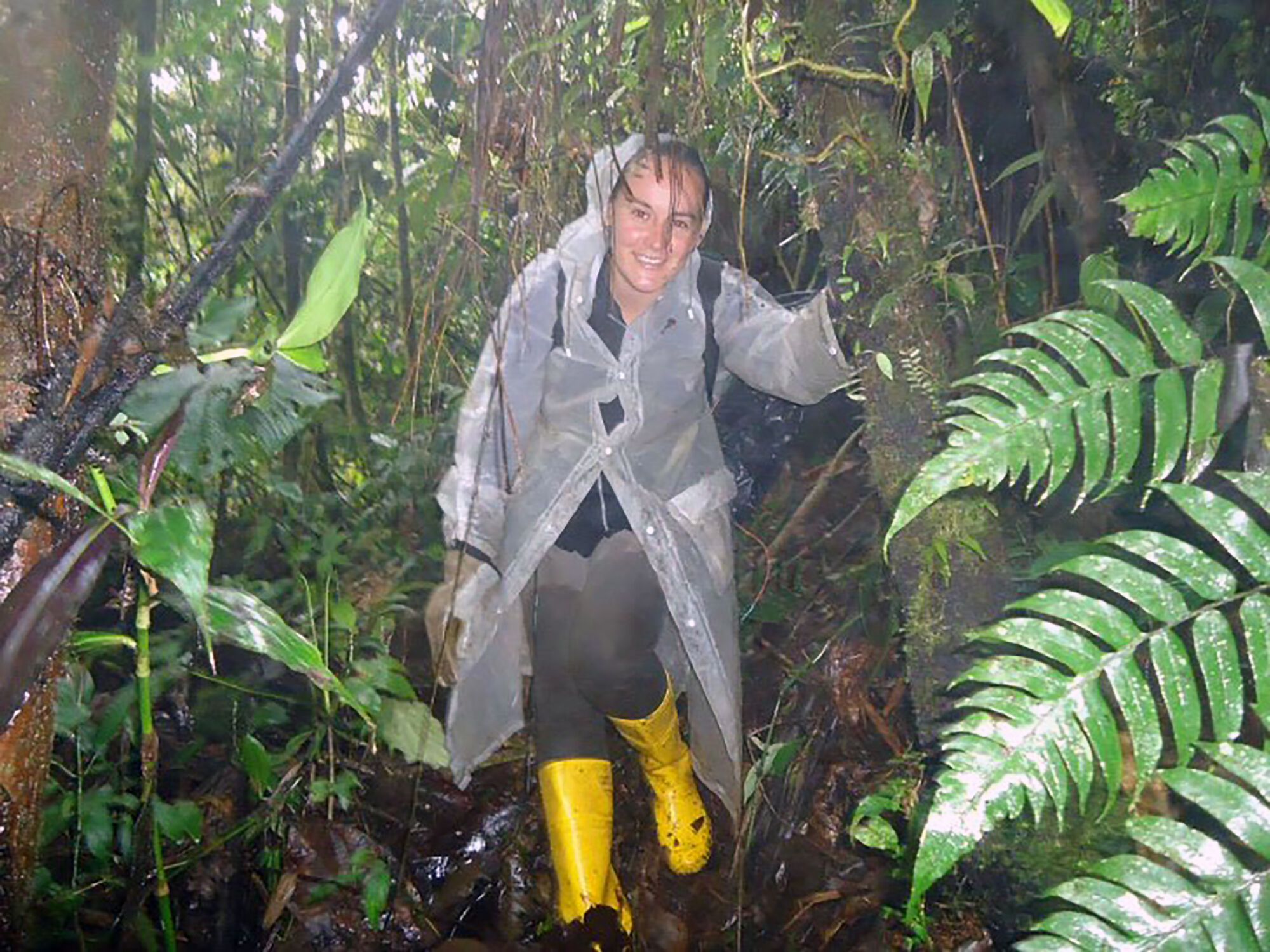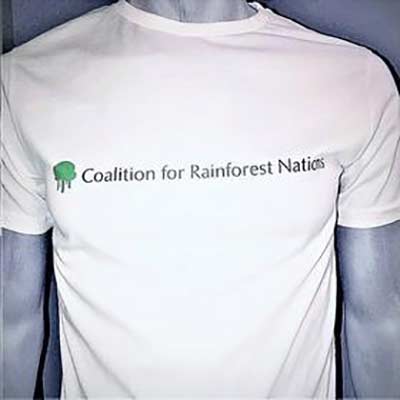
Celebrating Our People: Milena Niño, GHGI Expert.
Milena Niño joined the Coalition for Rainforest Nations in 2016 as an expert on greenhouse gas inventories and REDD+. She works on the Reporting for Results-Based REDD+ initiative.
What does the RRR+ team do? The Results-Based REDD+ (RRR+) team helps develop in-country expertise for reporting to the Reducing Emissions for Deforestation and Degradation mechanism. Specifically, we support developing countries building their capacity for measuring, verifying, and reporting greenhouse gas (GHG) emissions to the United Nations Framework Convention on Climate Change (UNFCCC).
Why do rainforest countries need greenhouse gas inventories? Because rainforests absorb greenhouse gasses, they are an essential nature-based solution for fighting climate change. Measuring how rainforests are doing helps manage their preservation. Greenhouse gas inventories (GHGIs) help countries find ways to protect their forests and access REDD+ results-based finance.
The area we focus on measuring is emissions sources and reductions in the agriculture, forests, and other land use (AFOLU) sector, which includes rainforests. CfRN’s RRR+ team makes sure that rainforest countries are aware of the latest guidelines, decisions, and methods for collecting the best data available.

Milena Nino (left) with Congo participants during REDD+ training (2019)
How has RRR+ training amplified the voice of rainforest nations in climate negotiations, such as the UN’s annual Conference of the Parties? Our trainings have empowered national teams who now participate in UN negotiations. Additionally, they are part of the UNFCCC Roster of Experts and have become regional coordinators. They are the voice that represents the views of their communities.
How does this GHGI work dovetail with the Paris Agreement? The countries we advise use GHGIs from the AFOLU sector as inputs for their REDD+ measurement and reporting. For the estimations of the sector emissions and removals, the Intergovernmental Panel on Climate Change (IPCC) guidelines for measuring AFOLU are applied. These work seamlessly with the Paris Agreement and help measure progress toward each country’s Paris Agreement pledge to reduce emissions, referred to as a nationally determined contribution (NDC).
What is your background? I’m an environmental engineer from Colombia. I have a master’s degree in Environmental Forestry from the University of Wales and a second master’s in Agricultural Development from the University of Copenhagen in Denmark. I also have three years of doctoral research on carbon accounting in different forest types and peatlands. I studied in Jamaica at the University of the West Indies, where I was on scholarship from the IPCC Prize, awarded by the Prince of Monaco II Foundation.
What inspired you to do this work? My dad was a big influence. He is a civil engineer in Colombia, specializing in water management. We would hike, cross rivers, and visit multiple towns within the water district he oversaw. I saw the impact his decisions had on people.
Growing up and studying in Colombia allowed me to see how magnificent nature is, and I simply fell in love with tropical forests. During my studies, we went on field trips to the Amazon and the Pacific jungles, Gorgona and Providencia Islands. We went to the desert, dry forests, the savannahs, areas with unique biodiversity. I loved interacting with a wide range of local communities, including remote indigenous tribes. I wanted to make a difference preserving the rainforests, and I saw how much positive impact I could have through CfRN.
How does the RRR+ team work together across so many countries? Our team of technical and policy advisors is about 12 people. Teamwork is key for our success. We manage multiple countries, each with its own timeline and set of technical requirements. We are very tight and are always supporting each other. We communicate all the time — we must, to ensure that the countries we support meet the deadlines and fulfill the expectations they set for themselves.
As a team, we build upon experience. We are constantly improving and creating new tools and solutions for each of the gaps we encounter along the way.
What tools has the team created to make gathering REDD+ data easier? One of our learnings was that rainforest nations needed a better way to track data on land use and how it changed over time. In 2021, CfRN developed our Land Use Assessment (CfRN LUA) app. We developed the CfRN LUA app by improving existing open-source data from FAO Collect Earth Desktop and Collect Earth Online (a joint venture of the UN’s Food and Agriculture Organization, SERVIR, NASA, and USAID).
CfRN’s LUA app allows countries to create a consistent annual time series of land use and land use change dynamics, factoring in the impacts of disturbances such as fires, logging, hurricanes, pests, and others specific to the country being analyzed. The tool gives full autonomy to the countries’ teams. It’s a real step forward. It is free of charge, user-friendly, and doesn’t require expensive hardware or software.
In addition, the data collected is now linked to the CfRN Foundational Platform, our calculation tool, which I helped develop to unify GHGIs, REDD+ reporting, and NDC preparation. The new features of the CfRN LUA app, combined with the CfRN Foundational Platform, have significantly reduced the time it takes to produce these very important reports. They have also reduced the steps needed for quality control since there is less of a chance for errors, and they ensure full consistency in the national monitoring and reporting system. Achieving this harmonization certainly has been a milestone for the countries.
How was 2021 for you? It was a year full of success. Our work in Belize is a great example. Belize submitted its REDD+ Technical Annex and updated its NDC based on the Forest Reference Level (FREL) and GHGI information our team helped support. A FREL is a technical report that developing nations submit to the UNFCCC. Reference levels are expressed as tonnes of CO2 equivalent per year and serve as benchmarks for assessing each country’s performance in implementing REDD+ activities. The Belize team can now do everything by themselves: data collection, data processing, and reporting.
I also supported Ghana and the Caribbean islands of the Dominican Republic, Saint Lucia, and Dominica with updating their GHGIs and FRELs. Having lived in the Caribbean Region for about 10 years now, I understand how important preserving the forests is for water regulation and reducing the impact of storms and hurricanes. Technical capacity was enhanced significantly, and that makes my heart happy.
The year was good, and I feel proud of what our team does every day. In one way or another, the advice and guidance we give the countries ends up preserving their forests.
What would you say to a prospective donor who is thinking about supporting CfRN? We are a small team, but our work has high impact. And I can say with confidence that it is of the highest quality. We ensure the countries we advise are fully UNFCCC and IPCC compliant. The reports the CfRN team has supported are transparent, consistent, and as complete and accurate as possible. We ensure the country teams are fully involved in each step of the process, which comes with a lot of responsibility. But it also brings satisfaction.
There are ways to make the reports fast and easy, but our goal is that the countries we support produce reports, design strategies, and implement monitoring systems that represent their particular circumstances. This requires a lot of research, as well as technical and political discussions with national and international experts, which makes it a rich process with robust outcomes.
You mentioned that your father was a strong influence on you. Are you passing on your knowledge to your children? Certainly. I have a baby girl, and since she was barely walking, I’ve taken her to the forest for adventures — climbing trees and jumping in muddy puddles. I want her to learn from nature. Nature has all the wisdom we need to live our lives. We just need to observe and learn how plants and animals do it.
I want my daughter to be part of that magical system and understand her role within it. I hope she can travel as much as I have and discover the natural beauty and wonders of the world. Hopefully, she will become a wise woman and can also share her knowledge with the world.

REDD+ Training, Dominica
“Growing up and studying in Colombia allowed me to see how magnificent nature is, and I simply fell in love with tropical forests.”


